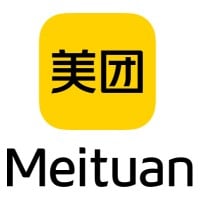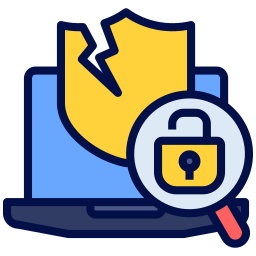
LinkedIn Company Cyber Security Posture
linkedin.comFounded in 2003, LinkedIn connects the world's professionals to make them more productive and successful. With more than 1 billion members worldwide, including executives from every Fortune 500 company, LinkedIn is the world's largest professional network. The company has a diversified business model with revenue coming from Talent Solutions, Marketing Solutions, Sales Solutions and Premium Subscriptions products. Headquartered in Silicon Valley, LinkedIn has offices across the globe..
LinkedIn Company Details
25460 employees
30198262.0
511
Software Development
linkedin.com
34
LIN_3207977
In-progress
Between 600 and 700
This score is AI-generated and less favored by cyber insurers, who prefer the TPRM score.
 LinkedIn Global Score
LinkedIn Global Score.png)

LinkedIn Company Scoring based on AI Models
| Model Name | Date | Description | Current Score Difference | Score |
|---|---|---|---|---|
| AVERAGE-Industry | 03-12-2025 | This score represents the average cybersecurity rating of companies already scanned within the same industry. It provides a benchmark to compare an individual company's security posture against its industry peers. | N/A | Between 600 and 700 |
LinkedIn Company Cyber Security News & History
| Entity | Type | Severity | Impact | Seen | Url ID | Details | View |
|---|---|---|---|---|---|---|---|
| Breach | 100 | 5 | 05/2016 | LIN12220522 | Link | ||
Rankiteo Explanation : Attack threatening the organization's existenceDescription: LinkedIn suffered a data breach incident in 2016 which exposed the email addresses and passwords of 117 million users. Hackers broke into the network, stole a database of password hashes, and posted some 6.5 million account credentials on a Russian password forum for the world to see. LinkedIn’s Chief Information Security Officer Cory Scott took the safety and security of members’ accounts seriously and offered protection tools such as email challenges and dual factor authentication. | |||||||
| Breach | 100 | 4 | 12/2016 | LIN1136181123 | Link | ||
Rankiteo Explanation : Attack with significant impact with customers data leaksDescription: Lynda.com now LinkedIn Learning, was informing its consumers of a security breach. The firm claims that an unauthorised third party gained access to a database that contained user data. The company began informing its clientele that hackers had gained access to learning data, including attempted courses and contact information. The company's owner, LinkedIn, verified the issue and disclosed that, as a precaution, the passwords of 55,000 users had been reset. It is possible that 9.5 million users were affected in total. LinkedIn disclosed further steps to safeguard user accounts on Lynda.com in reaction to the data leak. | |||||||
LinkedIn Company Subsidiaries

Founded in 2003, LinkedIn connects the world's professionals to make them more productive and successful. With more than 1 billion members worldwide, including executives from every Fortune 500 company, LinkedIn is the world's largest professional network. The company has a diversified business model with revenue coming from Talent Solutions, Marketing Solutions, Sales Solutions and Premium Subscriptions products. Headquartered in Silicon Valley, LinkedIn has offices across the globe..
Access Data Using Our API

Get company history
.png)
LinkedIn Cyber Security News
Why Being Right Doesn’t Mean You’ll Win in Cybersecurity Politics
Our discussion unpacked how security leaders can build political capital, navigate competing priorities, and align their initiatives with ...
AI-powered validation. No false positives. Zero guesswork. 🚨 On July 10th, get a front-row look at how this AI-driven platform simulates real-world exploits across networks and web apps—eliminating false positives, prioritizing real threats, and giving your cybe
AI-powered validation. No false positives. Zero guesswork. On July 10th, get a front-row look at how this AI-driven platform simulates ...
Fake Jobs, Real Threats: How to Stay Safe on LinkedIn and Email
How can we spot sophisticated new scams, fake profiles and more within our emails and on professional networking sites like LinkedIn?
Judges dismiss fiduciary angle in LPL, Wells lawsuits; how to boost wealth for Black Americans; tech for RIA cybersecurity
INDUSTRY NEWS: Two federal judges have decided in separate cases that brokerages did not have a fiduciary duty to look for clients' best ...
Qantas Hit By Major Cyber-Attack, Exposing Data of Up To 6 Million Customers
Qantas, Australia's largest airline, has disclosed a significant cyberattack that compromised customer data via a third-party service ...
Ahold Delhaize Ransomware Breach: A Wake-Up Call for Retail Cybersecurity
In late 2024, one of the largest food retailers in the U.S., Ahold Delhaize USA, fell victim to a devastating ransomware attack.
Microsoft transfers a top cybersecurity exec to its Cloud + AI group
Tech: Microsoft is moving a top cybersecurity exec to its Cloud + AI group, BI's Ashley Stewart exclusively reports. Business: Climate tech ...
Critical Vulnerability Uncovered In Microsoft 365 Copilot
A newly discovered attack, dubbed EchoLeak, is the first known zero-click vulnerability targeting AI systems.
LinkedIn's CISO and other executives break down how to get into the lucrative field of cybersecurity
LinkedIn's CISO and other executives break down how to get into the lucrative field of cybersecurity · Cybersecurity jobs are in high demand.

LinkedIn Similar Companies

Thomson Reuters MENA
Thomson Reuters is a leading provider of business information services. Our products include highly specialized information-enabled software and tools for legal, tax, accounting, and compliance professionals combined with the world’s most global news service – Reuters. Our customers operate in

Grab
Grab is Southeast Asia’s leading superapp, offering a suite of services consisting of deliveries, mobility, financial services, enterprise and others. Grabbers come from all over the world, and we are united by a common mission: to drive Southeast Asia forward by creating economic empowerment for ev

Bolt
At Bolt, we're building a future where people don’t need to own personal cars to move around safely and conveniently. A future where people have the freedom to use transport on demand, choosing whatever vehicle's best for each occasion — be it a car, scooter, or e-bike. We're helping over 200 mill

Yahoo
Yahoo serves as a trusted guide for hundreds of millions of people globally, helping them achieve their goals online through our portfolio of iconic products. For advertisers, Yahoo Advertising offers omnichannel solutions and powerful data to engage with our brands and deliver results. To learn mor

Meituan
Adhering to the ‘Retail + Technology’ strategy, Meituan commits to its mission that 'We help people eat better, live better'. Since its establishment in March 2010, Meituan has advanced the digital upgrading of services and goods retail on both supply and demand sides. Together with our partners we

Microsoft Mechanics
Apply the newest engineering from Microsoft to the work you do every day. Mechanics is Microsoft's official video series for IT Pros, Solution Architects, Developers, and Tech Enthusiasts. Watch as Microsoft engineers show you how to get the most from the software, service, and hardware they built

Frequently Asked Questions
Explore insights on cybersecurity incidents, risk posture, and Rankiteo's assessments.
LinkedIn CyberSecurity History Information
How many cyber incidents has LinkedIn faced?
Total Incidents: According to Rankiteo, LinkedIn has faced 2 incidents in the past.
What types of cybersecurity incidents have occurred at LinkedIn?
Incident Types: The types of cybersecurity incidents that have occurred incidents Breach.
How does LinkedIn detect and respond to cybersecurity incidents?
Detection and Response: The company detects and responds to cybersecurity incidents through remediation measures with Passwords reset for 55,000 users and communication strategy with Informing customers about the breach and remediation measures with Offered protection tools such as email challenges and dual factor authentication.
Incident Details
Can you provide details on each incident?

Incident : Data Breach
Title: Lynda.com Security Breach
Description: An unauthorized third party gained access to a database containing user data at Lynda.com, now LinkedIn Learning.
Type: Data Breach
Attack Vector: Unauthorized Access
Threat Actor: Unauthorized Third Party

Incident : Data Breach
Title: LinkedIn Data Breach
Description: LinkedIn suffered a data breach incident in 2016 which exposed the email addresses and passwords of 117 million users. Hackers broke into the network, stole a database of password hashes, and posted some 6.5 million account credentials on a Russian password forum for the world to see.
Date Detected: 2016
Date Publicly Disclosed: 2016
Type: Data Breach
Attack Vector: Network Intrusion
Threat Actor: Unknown Hackers
Motivation: Data Theft
What are the most common types of attacks the company has faced?
Common Attack Types: The most common types of attacks the company has faced is Breach.
Impact of the Incidents
What was the impact of each incident?

Incident : Data Breach LIN1136181123
Data Compromised: Learning Data, Contact Information

Incident : Data Breach LIN12220522
Data Compromised: Email addresses and passwords
What types of data are most commonly compromised in incidents?
Commonly Compromised Data Types: The types of data most commonly compromised in incidents are Learning Data, Contact Information and Email addresses and passwords.
Which entities were affected by each incident?

Incident : Data Breach LIN1136181123
Entity Type: Online Learning Platform
Industry: Education Technology
Customers Affected: Potentially 9.5 million users

Incident : Data Breach LIN12220522
Entity Type: Company
Industry: Social Media
Location: Global
Customers Affected: 117 million users
Response to the Incidents
What measures were taken in response to each incident?

Incident : Data Breach LIN1136181123
Remediation Measures: Passwords reset for 55,000 users
Communication Strategy: Informing customers about the breach

Incident : Data Breach LIN12220522
Remediation Measures: Offered protection tools such as email challenges and dual factor authentication
Data Breach Information
What type of data was compromised in each breach?

Incident : Data Breach LIN1136181123
Type of Data Compromised: Learning Data, Contact Information
Number of Records Exposed: Potentially 9.5 million users

Incident : Data Breach LIN12220522
Type of Data Compromised: Email addresses and passwords
Number of Records Exposed: 117 million
Data Encryption: Password hashes
Personally Identifiable Information: Email addresses
What measures does the company take to prevent data exfiltration?
Prevention of Data Exfiltration: The company takes the following measures to prevent data exfiltration: Passwords reset for 55,000 users, Offered protection tools such as email challenges and dual factor authentication.
Investigation Status
How does the company communicate the status of incident investigations to stakeholders?
Communication of Investigation Status: The company communicates the status of incident investigations to stakeholders through was Informing customers about the breach.
Stakeholder and Customer Advisories
Were there any advisories issued to stakeholders or customers for each incident?

Incident : Data Breach LIN1136181123
Customer Advisories: Informing customers about the breach
What advisories does the company provide to stakeholders and customers following an incident?
Advisories Provided: The company provides the following advisories to stakeholders and customers following an incident: was Informing customers about the breach.
Additional Questions
General Information
Who was the attacking group in the last incident?
Last Attacking Group: The attacking group in the last incident were an Unauthorized Third Party and Unknown Hackers.
Incident Details
What was the most recent incident detected?
Most Recent Incident Detected: The most recent incident detected was on 2016.
What was the most recent incident publicly disclosed?
Most Recent Incident Publicly Disclosed: The most recent incident publicly disclosed was on 2016.
Impact of the Incidents
What was the most significant data compromised in an incident?
Most Significant Data Compromised: The most significant data compromised in an incident were Learning Data, Contact Information and Email addresses and passwords.
Data Breach Information
What was the most sensitive data compromised in a breach?
Most Sensitive Data Compromised: The most sensitive data compromised in a breach were Learning Data, Contact Information and Email addresses and passwords.
What was the number of records exposed in the most significant breach?
Number of Records Exposed in Most Significant Breach: The number of records exposed in the most significant breach was 126.5M.
Stakeholder and Customer Advisories
What was the most recent customer advisory issued?
Most Recent Customer Advisory: The most recent customer advisory issued was was an Informing customers about the breach.
What Do We Measure?
















Every week, Rankiteo analyzes billions of signals to give organizations a sharper, faster view of emerging risks. With deeper, more actionable intelligence at their fingertips, security teams can outpace threat actors, respond instantly to Zero-Day attacks, and dramatically shrink their risk exposure window.
These are some of the factors we use to calculate the overall score:
Identify exposed access points, detect misconfigured SSL certificates, and uncover vulnerabilities across the network infrastructure.
Gain visibility into the software components used within an organization to detect vulnerabilities, manage risk, and ensure supply chain security.
Monitor and manage all IT assets and their configurations to ensure accurate, real-time visibility across the company's technology environment.
Leverage real-time insights on active threats, malware campaigns, and emerging vulnerabilities to proactively defend against evolving cyberattacks.




